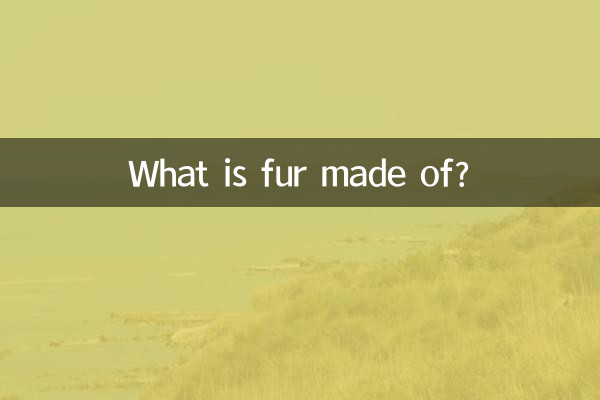What is fur made of?
In recent years, fur, as a high-end clothing material, has been controversial. With the rise of environmental awareness and the rise of the animal protection movement, the origin and production process of fur have become the focus of public attention. This article will combine the hot topics and hot content on the Internet in the past 10 days, deeply explore the raw material sources, production processes and related controversies of fur, and present relevant data in a structured way.
1. Source of raw materials for fur

Fur is usually made from animal fur. Common raw materials include fox, mink, rabbit, raccoon dog, etc. The following are the fur raw materials animals and their characteristics that netizens are most concerned about in the past 10 days:
| animal species | Features | Attention (%) |
|---|---|---|
| Mink | The hair is soft and glossy, often used in high-end fur | 45% |
| fox | The hair is long and fluffy, suitable for making coats and scarves | 30% |
| rabbit | Lower cost, often used in mid- to low-end fur products | 15% |
| raccoon dog | The coat has a unique color and is often used for decorative furs. | 10% |
2. Fur production process
The production process of fur is complex and involves many links. The following are the fur production process keywords with the highest search volume among netizens in the past 10 days:
| Process link | describe | Search volume (10,000 times) |
|---|---|---|
| Peel | Peel off animal skin completely | 25 |
| tanning | Chemical treatment to make fur soft and durable | 18 |
| dyeing | Add color to fur to meet market demand | 12 |
| sewing | Sewing processed fur into clothing | 8 |
3. Fur controversies and alternatives
The fur industry has always faced questions about animal protection and environmental protection. In the past 10 days, hot topics regarding fur controversies include:
1.animal welfare issues: Many animals are mistreated during breeding, triggering public outcry.
2.environmental impact: Chemicals used in the fur production process may contaminate water and soil.
3.The rise of faux fur: With the advancement of technology, artificial fur has become close to natural fur in texture and appearance, becoming an environmentally friendly alternative.
The following is a comparison of artificial fur and natural fur in the past 10 days:
| Comparative item | natural fur | artificial fur |
|---|---|---|
| price | high | lower |
| Environmental protection | Low | high |
| Durability | high | medium |
| consumer acceptance | decline | rise |
4. Summary
The raw materials and production process of fur have always been the focus of public attention, and with the increase in environmental awareness, artificial fur has gradually become a popular alternative. In the future, the fur industry may face more challenges and changes. When consumers choose fur products, they should fully understand their sources and impacts and make more responsible decisions.

check the details

check the details